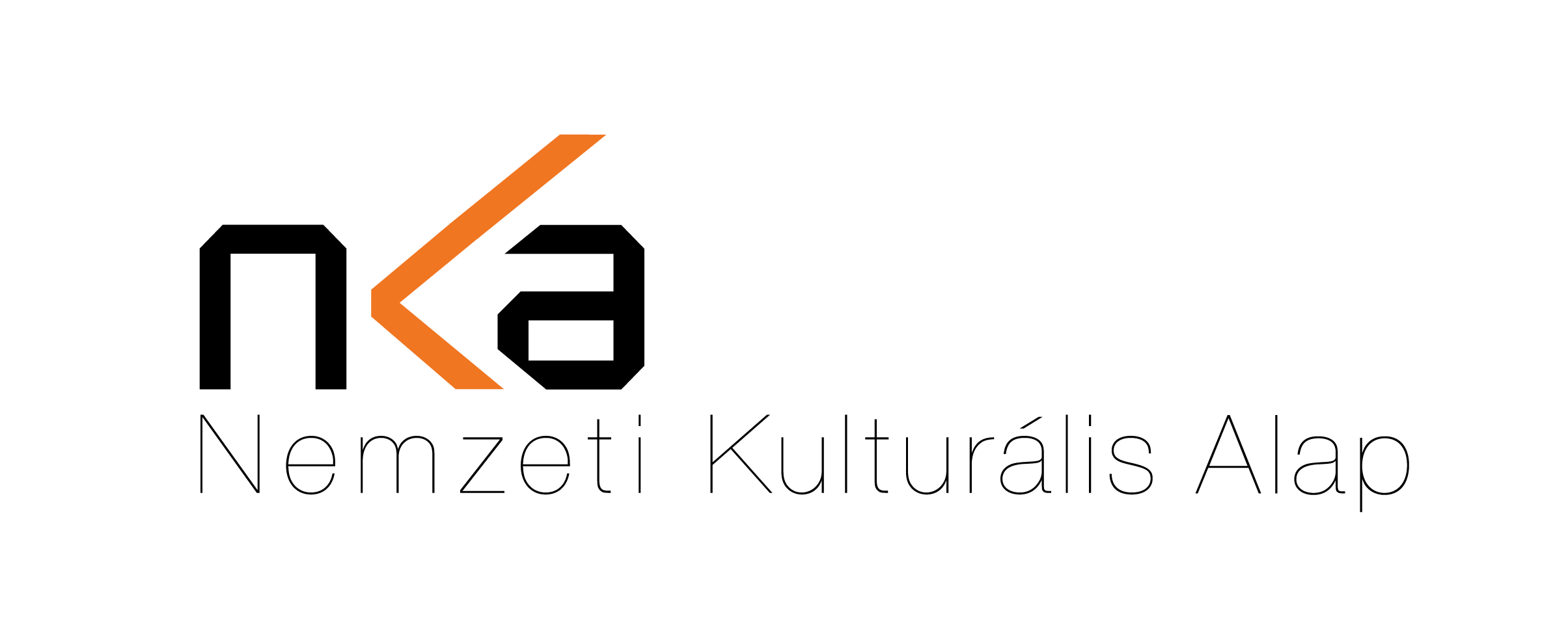Farewell and perspective
Miklós Szabó’s photographs of the peasant life
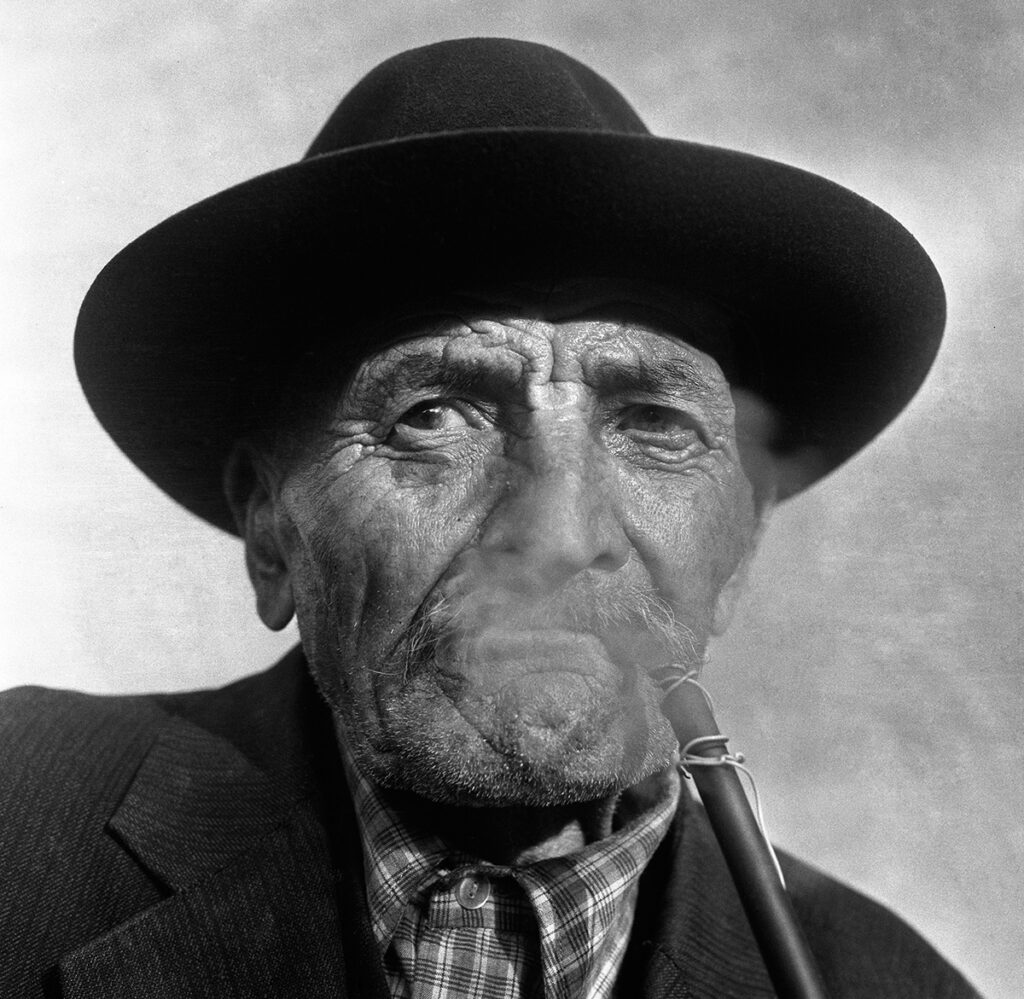
Can the statement, which at first seems so reversed, be true, that the work creates its creator? This exhibition argues for this path.
Miklós Szabó has been photographing the houses, people, lands and events in Hajdúböszörmény for fifteen years. He works on commission. As an employee of the city council, the cultural center, and the local newspaper. His task and standard are objective authenticity, solid quality and speed. Thousand and thousand of pictures have come out of his hands so far. Thousand and thousand of details of the world of Hajdúság which is so speacial as a whole. We now know that this was Miklós Szabó’s school; the test that the details put before him. He was forced to approach, observe and depict reality line by line. Then, the moments he got to know and as it were inventoried in this way gradually led him to the whole. From to shell to the core from material fidelity to more general truth.
He grew up in his hometown in two directions, on two paths, this deepening acquaintance. It offered the experience and sight of the passing peasant, village environment and the unfolding of the industrial, urban environment. According to its order: the degree of fulfillment was reached first the passing away. To be measured the thousand years peasant life not the ten or hundred year. But this was at the same time a period of trying and rich nature, of gutting and sustaining work, of a harsh and maturing human existence. It is impossible to deal with its decay and passing away simply with the gloomy and practical movements of lowering it into the grave. It requies more and more. A farewell that goes hand in hand with showing historical perspectives and truths.
He can include the farewell decency and this sober perspective in this exhibition photos. That’s how the houses, the objects, the tools, the faces and the moves became historical career evidence and memories. In what way? Through its simple, yet clearer and more emphatic means of highlightning, creating connections and contrasting. As a results of this consideration and aspiration, the old-style farmhouses with clean white walls, human-sized, bearing the traces of the human hand in every aspect, but dilapidated, falling apart, and lifeless, were included in the series. They owned two different type of quality. The emotional attraction and the mental alienation. They themselves indicate and justify that they are on the outside, they have to be the outside of life and history. As a completely hand-crafted, expedient, simple tool which however is already incomplete and broken; in immobility it cannot fulfill its purpose; wich is inevitably buried by weeds and earth. Its former integrity and vitality are only glimpsed here and there by the stancy, disfigured completely embarrassed. The pictures that speak most directly are those that capture wrinkled, old, tired faces and hands. Here the internal quality that arouses identifiction and aversion is almost perceptibly fighting with each other. These features bear the traces of constant coexistence with the elemental material world: the earth, the wind, the sun, the fire, the frost. The marks engraved on them by contiuous and hard work and conquest. At the same time, they take on rawness, angularity and distortion so many thick signs of rudimentaryness. In other words: they express the state of a person when he succumbed to external constraints, when he could hardly exercise his own good potential. When he was formed, he did not form. Although this radiates strenght, greatness and a certain beauty, it stems from vulnerability, submission, the lack of human freedom. Therefore, he wishes and urges self-transcendence. The achievement of a state in which person is the master of this world rather than a slave. And from here, from this, the features of his inner and outer image grow.
Of course all this can only be conveyed by the extraordinary richness and concreteness of the deatils, as well as the definite expression of the proportions, relationship and relations. The originality and value of Miklós Szabó’s representational power lies precisely in the lucky combination of these.
Székelyhidi Ágoston
Hajdú-Bihari Napló 1976. március 2.
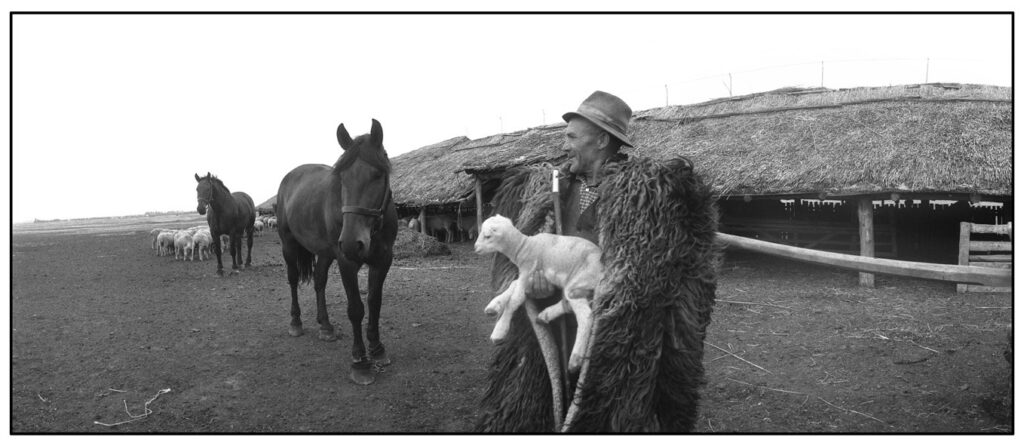
When it comes to faithfully capturing reality, documentary photography is considered the closest form of imaging. However, Miklós Szabó was more than a passive observer of the given moment, with his individual intuitions and simple solutions, through his photographs he asks us to get to know Hajdúság, to take a closer look at what was closest to him: the people and the landscape in which he lived.
With his humanistic approach to reportage and documentary photography, he always made the people he depicted and their life situations dignified. He knew and was interested in the topic, and many times he has got friendships with the characters.
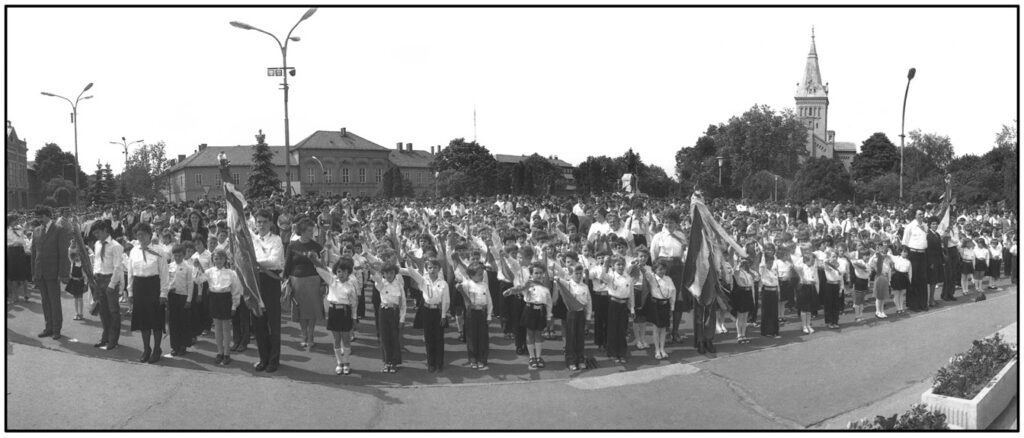
He used the Horizon camera its field of vision is beyond the realm of human vision. It captures the subject in a way that no other camera can, and perspective often allows the image to tell more than a single story, involving us and breaking down the barrier between the viewer and the image.

Miklós Szabó's work was characterized by varied themes, so while making the panoramic shots presented here, he took advantage of the opportunities offered by the format, be it reportage, documentary or artistic imaging.
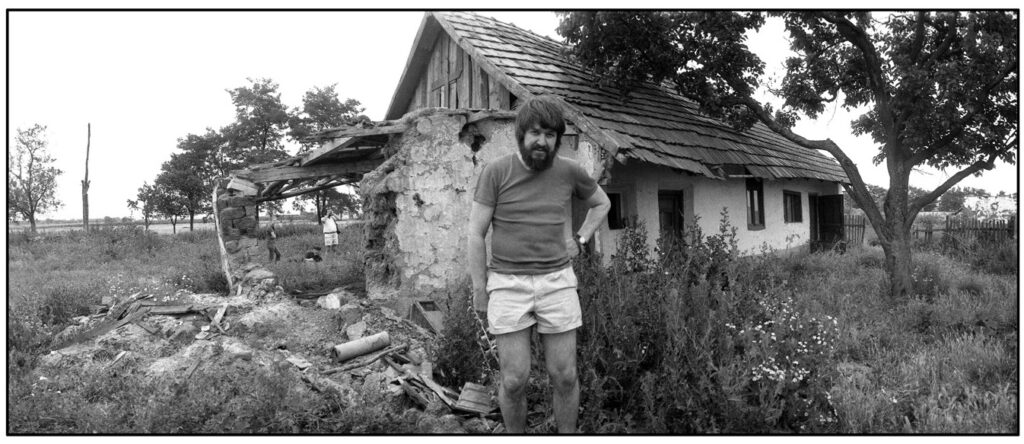
The photos he wants to present isn’t enough formal compositions and isn’t fleeting snapshots, but patient pictures of everyday life. Photography is not only about what appears in the picture, but also about what is not shown. With this camera, it's hard to rule it out; because the lens sees so much, it portrays the scene more honestly. The people in his photos often don't even know they're in the picture. This is a different working method, and need a different perspective, thanks to the opportunity provided by the format, we can feel ourselves in the infinite and timeless present.
Miklós Szabó-our photographer of our newspaper- his exhibition of about thirty photos travels throughtout the spring in the factories, institutions and producer cooperatives of Hajdúböszörmény and Hajdúnánás. The thematic material is an uniform selectioen, he’s talks about the human from Hajdúság, the peasant life half-past, the decaying-transitive farm lifestyle. The language of the photo also testifies to that connection, it connects our present to the past, ties it to the ground our life and work. The devices, tools, and objects appearing in the pictures are in themselves eloquent expressions of the past, just like the discarded boots, the dilapidated barn, and the grass covering unused objects.
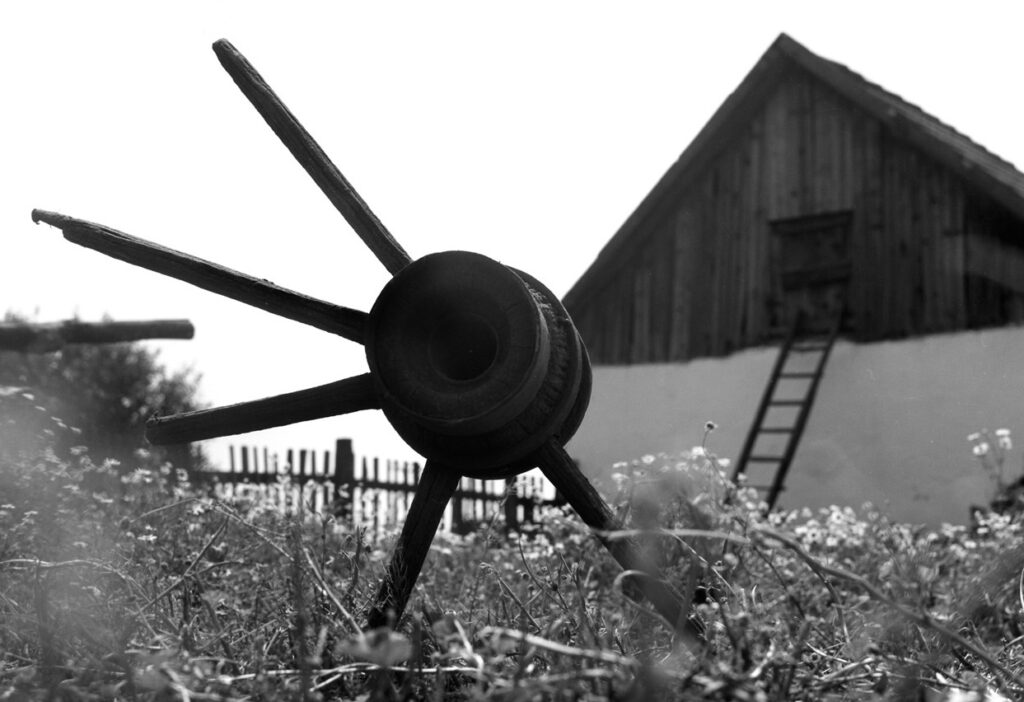
Miklós Szabó contemporary to the photography devices, communicates things in his language, grab moments, feelings to the human – objective – natural world the traces of wich it still lives today, and wich two or three decades earlier had been decisive in our lives. But each piece of the material world of the peasant everyday life can be a symbol of an era beyond itself. A berena that can be pulled by animal power, a seeder with a thin tread, a rarely used cylinder, a rusted ploughshare speaks of this world. As a well-crafted hand shaped for a tool, a narrow look expressing aloofness, a typical work gesture testify to the same. The photos of this exhibition bring a small slice of the surrounding and passing world: the old peasant way of life, the world of the farm dwellers, in such a way that we can feel it: that field salsify, yarrow, thistle, a field flower, a passing way of life painful-beautiful, con - refers to his hard, never-returning world.
Miklós Szabó’s artistic works are at the same time authentic and convincing documents of the town’s history, preserving some of the characteristics, elements and motifs of the lifeof the Hajdúság peasant.
Lázár Imre
Hajdúböszörményi Termelőszövetkezetek Lapja 1978. április 19.
”These photos document the age and personal history at the same time: creations of artistic value, conserving and authenticating past and present, serving as the foundation of the future.” this is how Imre Lázár, former mayor of the town, praised Miklós Szabó’s works. The exhibition of the photographer, ”My town, Hajdúböszörmény” opened on the 80th anniversary of his birth.

The opening ceremony was held on 27th October in Hajdúsági Gallery. For this occasion, a catalogue of identical title was published with some impressive introductory thoughts: ”When it comes to representational art, documentary photography is considered the most important art form to image reality. Miklós Szabó, however, was more than a passive observer of the recorded moment. His intuitive and straightforward technique invites the viewer to discover the people and the landscape of Hajdúság, to have a closer look at the most precious things in the photographer’s life”. At the event, Ildikó H. Fehér, editor reporter, highlighted that the exhibition was brought to life by the initiative of Hajdúsági Museum with the contribution of Szabadhajdú Public Benefit Nonprofit Ltd, the Municipality and the family of the photographer. The aim of this collaboration is to maintain and publish Miklós Szabó’s photo material, preserving and presenting his works, spirit and legacy. The introductory speech was followed by the performance of Sarolta Kapusi, teacher of the Music School, and Eszter Kiss. Imre Bertalan, executive director of Szabadhajdú Public Benefit Nonprofit Ltd., welcomed the audience and expressed his approbation for the intention and support of the Municipality to record and archive the major occasions, events of the Town in an appropriate way and hand these values over to future generations. Collaboration started in the beginning of last year and we can admire this wonderful collection as a result of the hard work. Director celebrated the contribution of Miklós Szabó’s family, the Municipality of Hajdúböszörmény and the representatives of Hajdúsági Museum with special praise to artist photographer, Tamás Horváth. Klára Lelesziné Sveda, deputy chair of the Educational and Cultural Committee, continued with some words about the life and career of Miklós Szabó. She mentioned that arriving as third child to the family, he received loving care and tenderness from his parents, as he became their only child after the early death of his siblings. His father, Zoltán Szabó was a prestigious merchant in Hajdúböszörmény, following the nationalization, he continued as a cashier at the municipal legal office. His mother managed the household whole-heartedly. He graduated at Teacher Training College in Eger and worked at Bethlen Gábor Primary School for 40 years as teacher and later deputy headmaster. His affection and passion for photography developed during the secondary school years. Klára Leleszné Sveda also talked about an important milestone in his private life, his marriage with his colleague Júlia Nagy at Christmas time in 1969, who became his trustworthy companion throughout the 26 years they spent together. They had two children whom they raised with loving care.
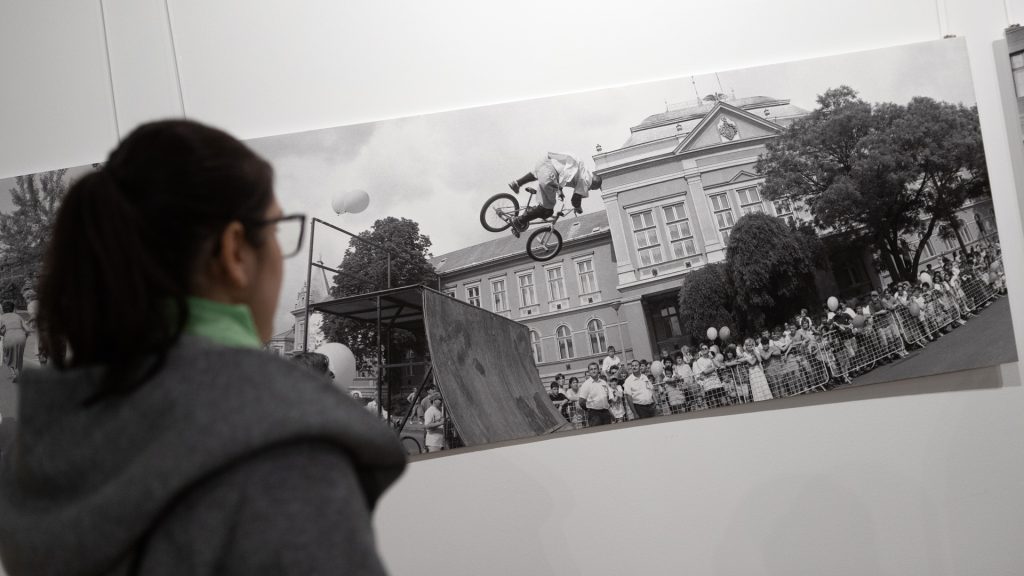
People of Hajdúböszörmény often refer to Miklós Szabó as the photographer of the town . He took up this profession in 1960 and was appointed municipal photographer between 1966 and 2006. ”Sharp eyes and heart make a good photographer” – he used to say. He attended different occasions of the town, taking tens of thousands of photos and documenting the history of the town throughout four decades. He was a chronicler who recorded the events, as well as scientists, politicians, artists coming to our town. During the past decades he became the photographer of the Town’s weekly newspaper, and he prepared photos used for the Photo News. Deputy chair added that Miklós Szabó always had plans and goals that kept him up and doing. He left us a considerable legacy and our obligation is preserving and sharing it with the wide public. At the end of the opening ceremony, Miklós Szabó, the photographer’s son thanked all the contributors who facilitated the organisation of the exhibition. He drew attention to the outstanding work of Tamás Horváth artist photographer and handed over his father’s analogue camera as a recognition. ”Miklós Szabó bequeathed a huge legacy to the residents of this town, we can keep decades of history in our hands and our ’only’ duty is to preserve them” said Imre Gargya, his former colleague. The collection can be visited until January 5th at Hajdúsági Gallery, Culture Centre.
Erzsébet Bertalan

